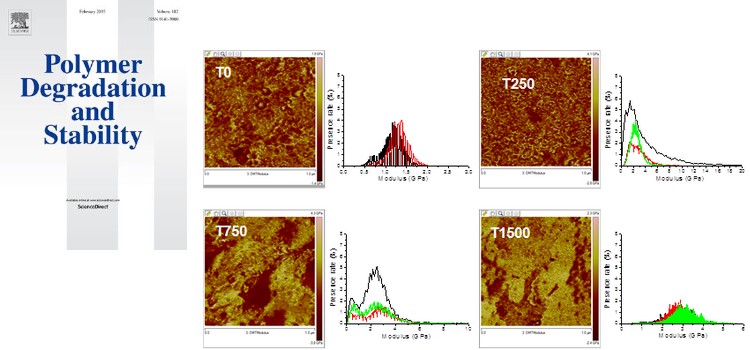

The photo-oxidation behaviour of a biobased epoxy polymer has been studied under irradiation at wavelengths > 315 nm at 45°C and in the presence of oxygen. The resin is obtained after curing a blend of an epoxidized linseed oil (ELO) and epoxidized glycerol (EG) with methyltetrahydrophtalic anhydride (MTHPA). Molecular changes induced by the UV exposure were followed by infrared and UV-Vis spectroscopy. A mechanism involving the abstraction of the most labile hydrogen atoms of the structure and accounting for the formation of the photoproducts identified by FTIR spectroscopy has been proposed. Microhardness and Atomic Force Microscopy (AFM) equipped with a nanomechanical mapping mode were performed to determine the modification of the morphology and of the mechanical behaviour of the top surface. Microhardness and AFM results suggest that crosslinking reactions occur in competition with β scission reactions. The crosslinking reactions control the changes in mechanical properties of the top surface at short irradiation times while the β scission reactions become more competitive for long irradiation times and results in a decrease of stiffness of the surface.
Biobased epoxy resin, Epoxidized linseed oil, Photooxidation, Degradation mechanism, Mechanical properties, Peak Force AFM
